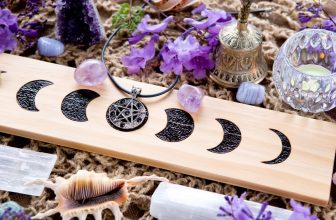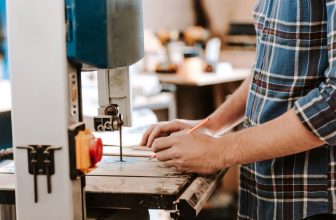Contents
One of these saws would be pretty much a useless hunk of machinery without a blade – so needless to say, it’s important that you know what to look for in a good blade.
You might call the blade the heart of the miter saw… and of any powered saw, really.
There’s not only different sizes, but also blades made out of different materials, and with different numbers of teeth.
All of these things will have an impact on the type of cut you get – and it’s important to know which blade will give the best results for your needs.
Precise woodworking will require one type of blade, whereas rough cuts or cutting other materials will require another type, and so on.
Miter saw blade sizing
Miter saws currently come with 8 to 12 inch blades.
The important thing to know here is that a miter saw can only run one size of blade. So you can’t put an 8 inch blade on a saw designed to run 12 inch, for example.
Although I’m not sure why anyone would want to do that in the first place!
You need to think about what you’ll be using your miter saw for, and then let that help you choose the right blade size.
This mostly comes down to the width of the materials you’ll be cutting – a larger blade means more cutting capacity.
Safety side note: Sometimes circular saw or table saw blades can be used on a miter saw, but often not – be sure to check with the manufacturer before attempting this.
Also, blades will list a max RPM. Make sure the saw doesn’t run at a higher RPM than the blade is graded for, or it’ll disintegrate in use.
Larger blades are also more expensive, quite a bit more expensive. Also, a miter saw that runs a large blade with also generally be more expensive than a smaller saw.
This is definitely something to take into consideration – no point in buying a miter saw that’s bigger than needed, and wasting money in the process.
Blade material
Blades mainly come in three types of materials that you should be aware of: steel, high speed steel, and carbide-tipped.
Steel blades
A plain old steel blade is the most basic and least capable blade – although certainly serves its purpose well. It’s useful for softwoods and other soft materials, like plastic.
These blades won’t deliver great results on hardwoods, and will tend to dull quickly.
Also notable is that these blades are the most affordable.
High speed steel
These are still steel blades, but they’re designed to run at higher speeds – you couldn’t have guessed that from the name, right?
These are stronger blades, and more useful for hardwoods and tough materials.
These won’t dull as quickly as standard steel blades, but they’re a little pricier – although, also less pricey than carbide-tipped blades.
Carbide-tipped blades
These are also steel blades, but are carbide-tipped for extra strength and precision.
The tip of the blade is the part that does most of the actual cutting, so having these tips makes a big difference.
This will stay sharp for the longest of all 3 types, and you’ll definitely want a carbide-tipped blade for precise woodworking.
A carbide-tipped blade, especially one that also has a thin kerf and high number of teeth, will make very precise and clean cuts.
Needless to say, these are also the most expensive blades.
Number of teeth
Blades come in a pretty larger variety in terms of number of teeth, too.
You can get them starting at about 30 teeth, and up to around 90.
More teeth generally means a more precise cut. The blade takes a smaller amount of material with each pass of a tooth, which is what makes it so precise.
Lower number of teeth on a blade is useful for rough cuts. Fewer teeth means a larger gap between each tooth (called a gullet), which means more space to remove a larger amount of material with each pass.
This of course is less precise, but also faster and perfect for rough cuts.
Kerf
The kerf is essentially the thickness of the blade.
This is important, because this is also the thickness of cut that will be made when the blade moves into the material.
Similarly to number of teeth, a blade with a thick kerf is useful for rough cuts and removing a lot of material quickly.
And a thin kerf blade is useful for precise cuts, although makes those cuts a bit more slowly.
Conclusion
As with most things to do with miter saws and power tools in general, the specifics of all these blade features really come down to how you’ll be using your tool.
Once you have a clear understanding of that, it should guide you easily to make the right choices for what type of blade you need.
That’s the same for your choice of miter saw or any other power tool, too. When you know what you need and know your choice of features, it’s fairly easy to make the right decision.






